The Jurassic Coast is a stretch of coast, sand, pathway and road that boasts some serious natural wonder.
The UK’s first and only natural UNESCO World Heritage Site, recognised for its rocks, fossils and landforms, the Jurassic Coasts begins in Exmouth in the west and stretches for nearly 100 miles heading east, ending at the gorgeous Studland beach. Along the way, you’ll find postcard-perfect towns, sweeping vistas of sand and sea, and some of the world’s most ancient rock formations, some as much as 250 million years old!
It’s those 100 miles we’re traversing today, taking a load off and enjoying the comfort of a good ol’ fashioned staycation by coach.
We say ‘old fashioned’ but the perception of these Great British staycation institutions is changing. As the Great Destination Road Show recently reported, the popularity of coach holidays with young people is on the rise, with over 40% of those onboard now under the age of 65.
It’s easy to see why; there’s ample legroom, superb views of the scenery and most importantly, it’s a far more eco-friendly way to travel than by car or plane.
Rest assured, they don’t call this one of the best UK coach holidays for nothing. So, hop on board and buckle up; here are 6 of the best places to visit on your coach tour of the Jurassic Coast.
SIDMOUTH
Though the Jurassic Coast begins in Exmouth, we’re beginning our journey in Sidmouth, a picturesque seaside town with a wide promenade ideal for strolling, and a visually arresting stretch of seafront villas that call to mind an entirely different era.
Sometimes referred to as ‘Devon’s best kept secret’, here, you can scale Jacob’s Ladder, a set of old wooden steps that lead from the beach of the same name up to Connaught Gardens (the views from which are outstanding).
From there, join the South West Coast Path, should you be keen on hiking rather than taking the easy option of four wheels. That path is the UK’s longest National Trail, a whopping 630 miles of hiking, scrambling and occasional strolling. The Sidmouth to Studland stretch encompasses 85 miles…see you back on the coach?
Away from dry land, the rock islands at Sidmouth, which are designed to protect and preserve the beaches here, are quite spectacular, too.
Read: The best UK road trips to do with the kids before they grow up
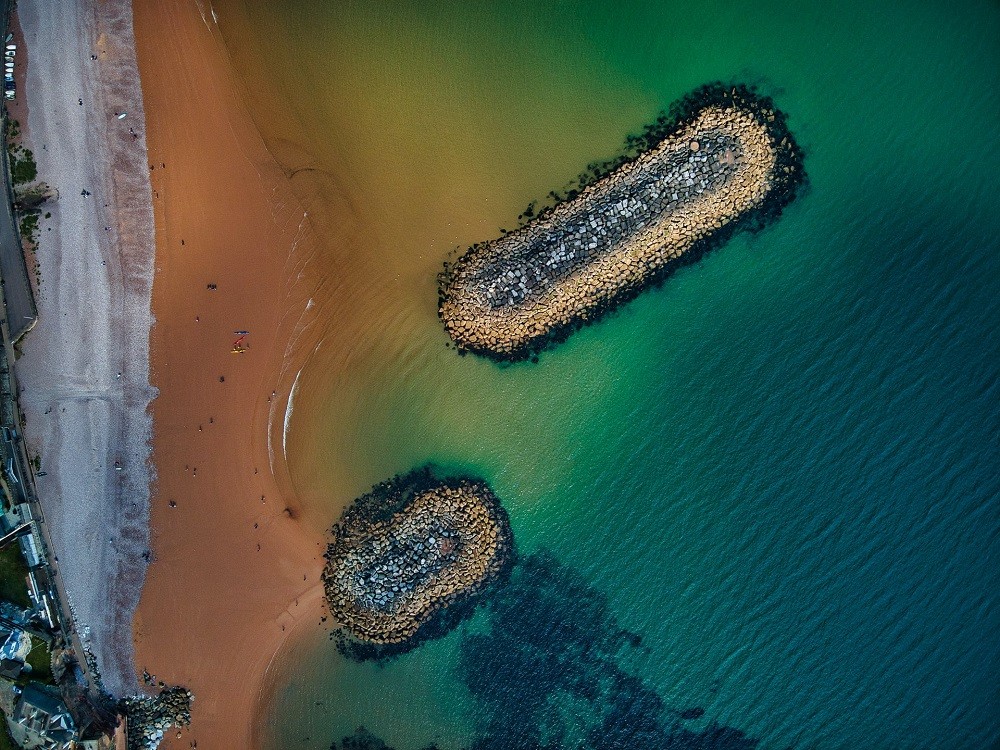
HIVE BEACH
An hour’s drive onwards east, crossing counties from Devon to Dorset, and we arrive at Hive Beach. This mile long, uncrowded stretch of coarse sand beach boasts a particularly dramatic backdrop; the cliffs of Burton Bradstock overlook the beach and be warned, are liable to drop rocks at any time.
Hive Beach is just one part of the Jurassic Coast’s larger stretch of Chesil Beach, an 18 mile belt of shingle ridge that is rugged, elemental and emotionally stirring. No wonder the renowned author John Fowles wrote of the area’s majesty; “It is above all an elemental place, made of sea, shingle and sky, its dominant sound always that of waves on moving stone’’.
Perhaps bring your own pen and paper, and write something equally poetic as you travel to your next stop on our coach tour of the Jurassic Coast…
DURDLE DOOR, LULWORTH COVE & THE FOSSIL FOREST
The most iconic, photographed landmark on the whole of the Jurassic Coast, the natural limestone arch of Durdle Door, rising out of the water like a mythical beast, has to be seen to be believed. Ideally, you’ll do just that, from afar at the Durdle Door Cliff Lookout Point and then from Durdle Door beach itself.
It’s not recommended that you enjoy a view of the famous natural arch from underneath it, however; the RNLI caution against swimming through the ‘door’ as the area is prone to stronger currents due to tides moving faster when funnelling through the arch.
An attractive but challenging (to put it mildly) twenty minute walk onwards and you’ll enjoy views of the stunning Lulworth Cove opening out in front of you. This almost perfectly circular cove is world famous for its unique geology – make sure you visit the Fossil Forest on the opposite side of the cove, which contains evidence of life from 145 million years ago.
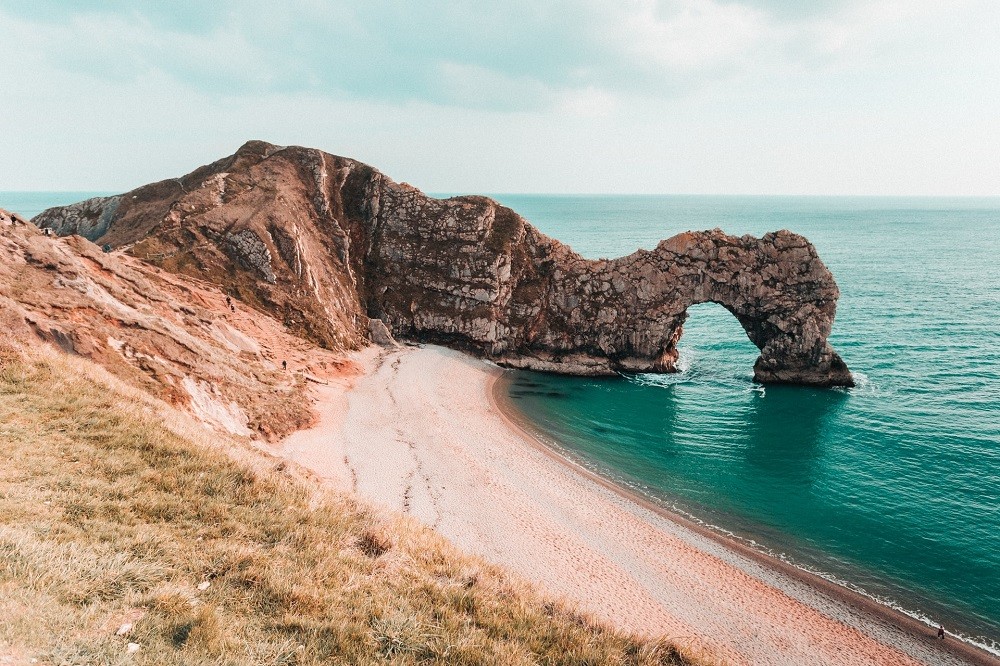
SWANAGE
After all that hiking you’ll be glad for the 40 minute drive to Swanage, one of the Jurassic Coast’s most popular stops and its final town. Quaint, peaceful and picturesque, but with a surprising amount going on, it’s the quintessential British seaside escape.
Rather than keep you here, we’ll provide you with some travel reading to bookmark for when you’re sitting comfortably onboard and staring out the window just won’t do; here are 5 IDEAL things to do in Swanage.
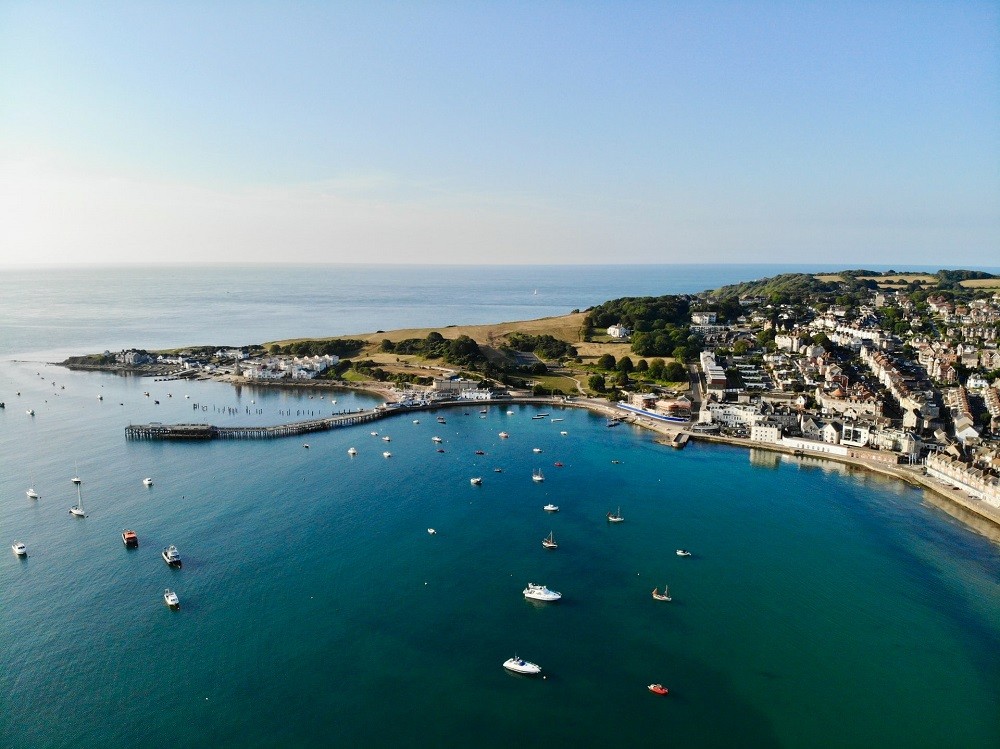
CORFE CASTLE
We’re heading inland slightly here, we realise, but it would be remiss of us not to show you Corfe Castle, one of Britain’s most famous medieval ruins.
In fact, we’re getting off the coach entirely and instead hopping on a steam train from Swanage to Corfe. Like a museum in motion, complete with old school private carriages and blissful views of the countryside, this might just be the best ride of the whole trip. The final view after half an hour on the train, as you pull into Corfe, is just stunning!
If you’re inclined to alight and explore the castle on foot, be warned that’s it’s a bit of a climb, since Corfe Castle is perched on a hill. Admission is £12 for adults.
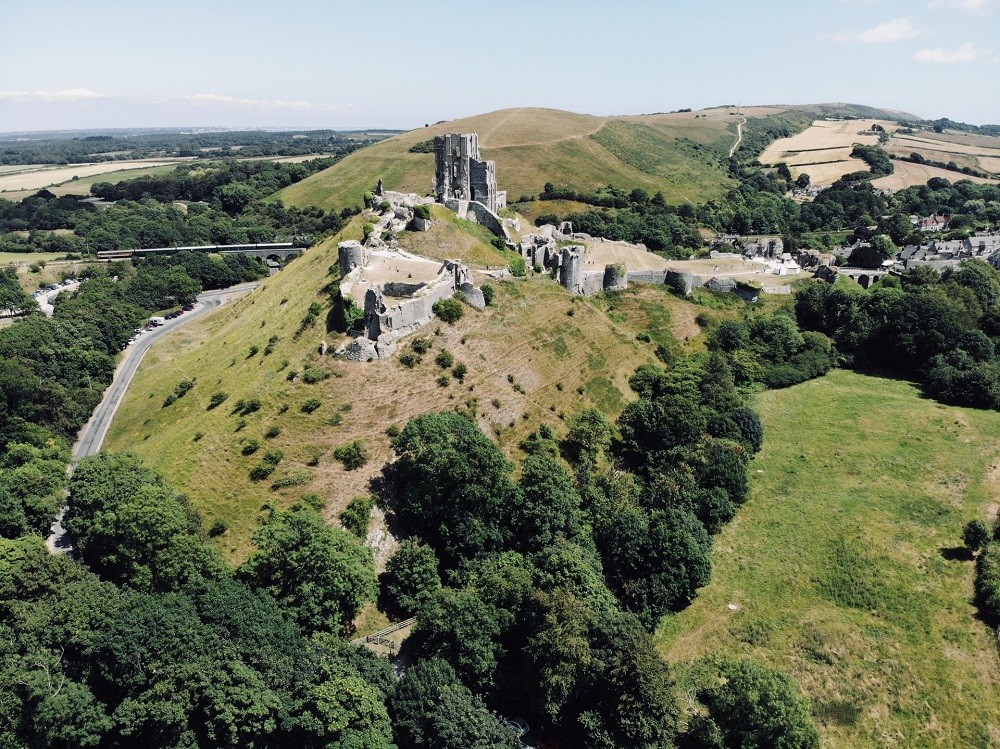
OLD HARRY’S ROCKS & STUDLAND BAY
Back in Swanage, we’re bidding the coach farewell and enjoying the peaceful stroll of the Jurassic Coast’s Swanage to Studland walk, which takes around an hour. Along the path, you’ll see the majestic chalk stacks of Old Harry’s Rocks, as well as fine views of the English Channel with the Isle of Wight visible for the duration of the walk.
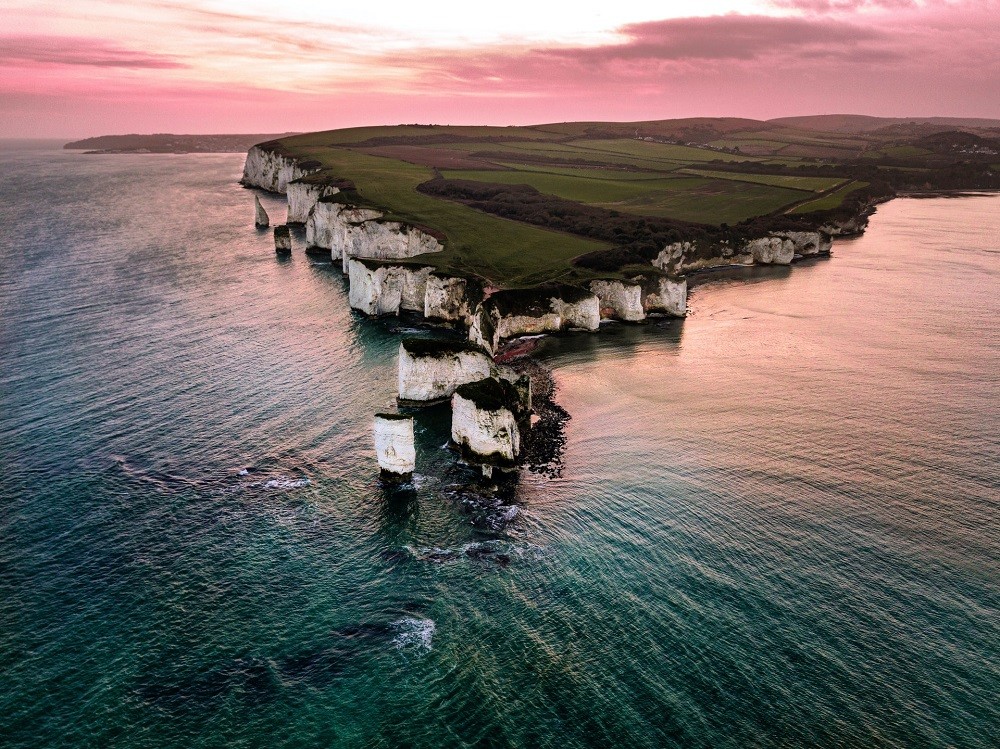
Finally, we descend into Studland Bay, a vast four mile stretch of sandy beach where you can find respite and relaxation even on its busiest days. What a trip!





